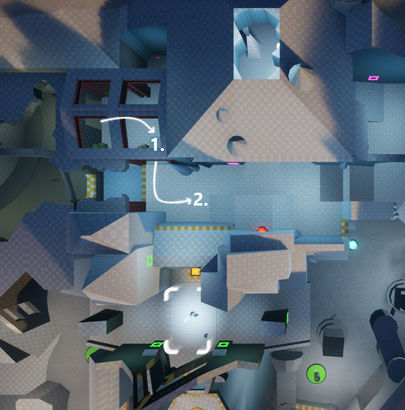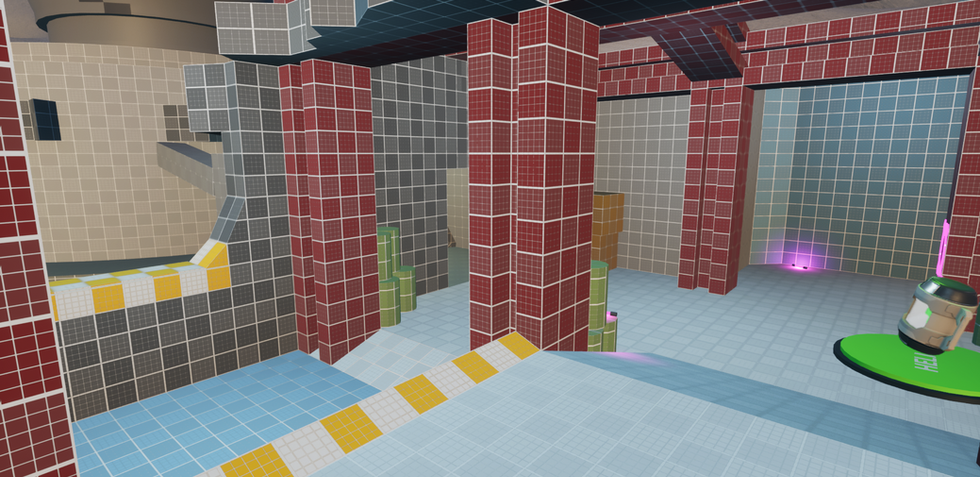

STAR WARS
LYRA
Multiplayer Shooter Level Design
Introduction
Project Breakdown
I wanted to hone my level design skills by creating a level that adheres to a predefined game design and gameplay metrics. When designing levels in Unreal Engine for scratch, it's tempting to adjust the game design to fit the level, but ideally the level should be designed from the game design.
The goal of this project was to develop a multiplayer level with high replay-ability, set within the Star Wars universe. To achieve this I used Epic's own Lyra asset pack, so I could focus on the level design. The map is design for matches against other players or solo against Lyra's own AI. The teams fight over the control of three control points in a conquest game mode, with the Rebels spawning on one side of the map and the Empire on the other.
-
Solo Project made in 4 weeks at half speed
-
Focus on level design & world building
-
Blockout
-
Unreal 5.4
-
Blockout Tools
-
Lyra Starter Game
-
Blender 4.4
Engine
Plugins & Asset Packs
Other
Walkthrough with Commentary
Overview

Layout & Balance
Flow


Pace
The level features both dwelling spaces for slower-paced combat and roaming spaces for high-intensity action. The level is made compact, allowing players to traverse from edge to edge in ten seconds, minimizing downtime between encounters.
I also use an hourglass design to control player movement and create choke points that lead to more combat encounters. Choke points are placed near control points and spawns to give the defending/spawning team an advantage. However, alternative routes give attackers flanking opportunities.
Balance
Weapons and health pickups are carefully distributed along the level's pathways, to ensure neither team has an unfair advantage, but also to give the many paths a purpose for the player to take them.

Design Techniques
Here, I will show design techniques used in the level and explain my thought process behind them.
Reveals
I wanted to include design techniques that enhance the level's world, story and scale.
One of these designs was to include reveals of dramatic set pieces and backdrops to wow the player.
For example, I revealed two key objects in the level in secession. The first is a hard reveal of the green light beam shooting out from the level center, this is to give the player a central landmark they can orient towards. The second is also a hard reveal, but of a large Destroyer spaceship looming over the level, adding a sense of urgency and scale.
Callouts & Goals
I placed landmarks as that function as focal points for callouts, but also to create strategic goals. Focal points like the radar bunker and archway serve as callouts. In areas like the cave and construction site, the space itself acts as a callout, due to its unique characteristics.
The level features two major landmarks, a large laser gun near the Rebel spawn and a green laser beam at the map's center. The green laser beam is in the middle, helping both teams to orient themselves. The large laser canon is not accessible, but it represents a strategic goal for the Rebels to defend and the Empire to capture. The gun also rotates, makes sounds and fires, to make the player feel like they are taking part in a much larger battle.

Cover & Boundaries
Establishing clear boundaries within the level was crucial to communicate the playable area and distinguish between half and full cover. I set the level in a small valley with high walls, which naturally delineates the playable space.
Additionally, I incorporated mountains on one side and a sea of clouds on the other. These not only serve as a backdrop but also further define the map's boundaries.
Breakdowns
Cave
When designing the cave control point, I drew inspiration from the ice caves on the Star Wars Hoth planet. The cave and its surroundings form a smaller infinity eight shape within the level's larger design, ensuring both teams have equal entry points and also ease of flow.
The cave has three entries. Entries one and two are easier to defend, while the third allows for flanking maneuvers. Attackers can dash to the vantage point Heaven, for a strategic lookout. The green laser beam visible through Entry 3 helping players expand their mental map.
In case of a forced retreat, players have access to two health kits, along with three dash paths for a quick escape.
Balcony
I designed the middle control point to be the most dangerous, by positioning it in the center of a long lane with no nearby cover. This control point is also the closest to both teams' spawns and can be reached quickly from other areas, increasing the likelihood of combat.
Both teams' similar starting positions can lead to prolonged standoffs. To break these deadlocks, numerous flanking routes are available.
Radar
The radar control point is small to encourage close-quarters combat, with a shotgun placed nearby to further promote this.
The radar site has four entrances, two of which require dashing. Two of the entrances are easier to defend, while the others are harder. This makes the radar point moderately defensible, placing it between the other two points.
The area around the shotgun pickup is open, adding risk to capturing it, since it's the most powerful gun in Lyra.
Iterations
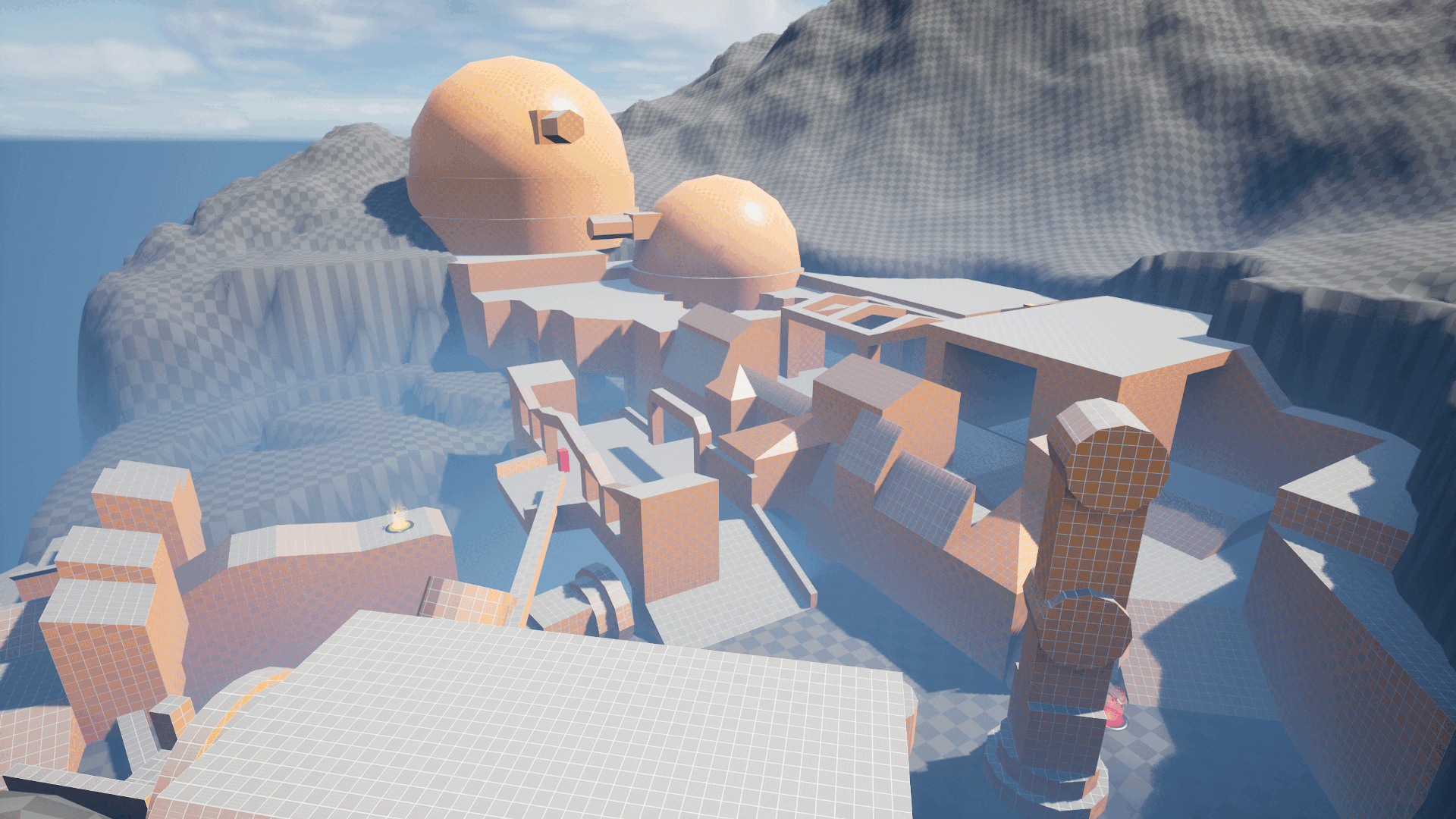
Playtest
Lyra's AI proved very useful during the level iteration process, enabling me to playtest against opponents and swiftly make adjustments.
Feedback from other playtesters who also played against the AI was crucial. It provided insights into whether players experienced the level as intended and highlighted what they enjoyed or found lacking in the map.
Changes
Feedback highlighted that the outdoor areas of the level felt too open. To address this, I added more cover, ensuring they didn't clutter the map. Playtesters also mentioned difficulty in spotting enemies, as they blending with the environment. I resolved this by adjusting the skylight's brightness and overall color scheme to enhance visibility.
I noticed from my own testing that certain locations lacked clear callouts. To improve this, I added distinct features such as an arch, radar, green laser beam, landing pad, and extended the trenches to improve this.
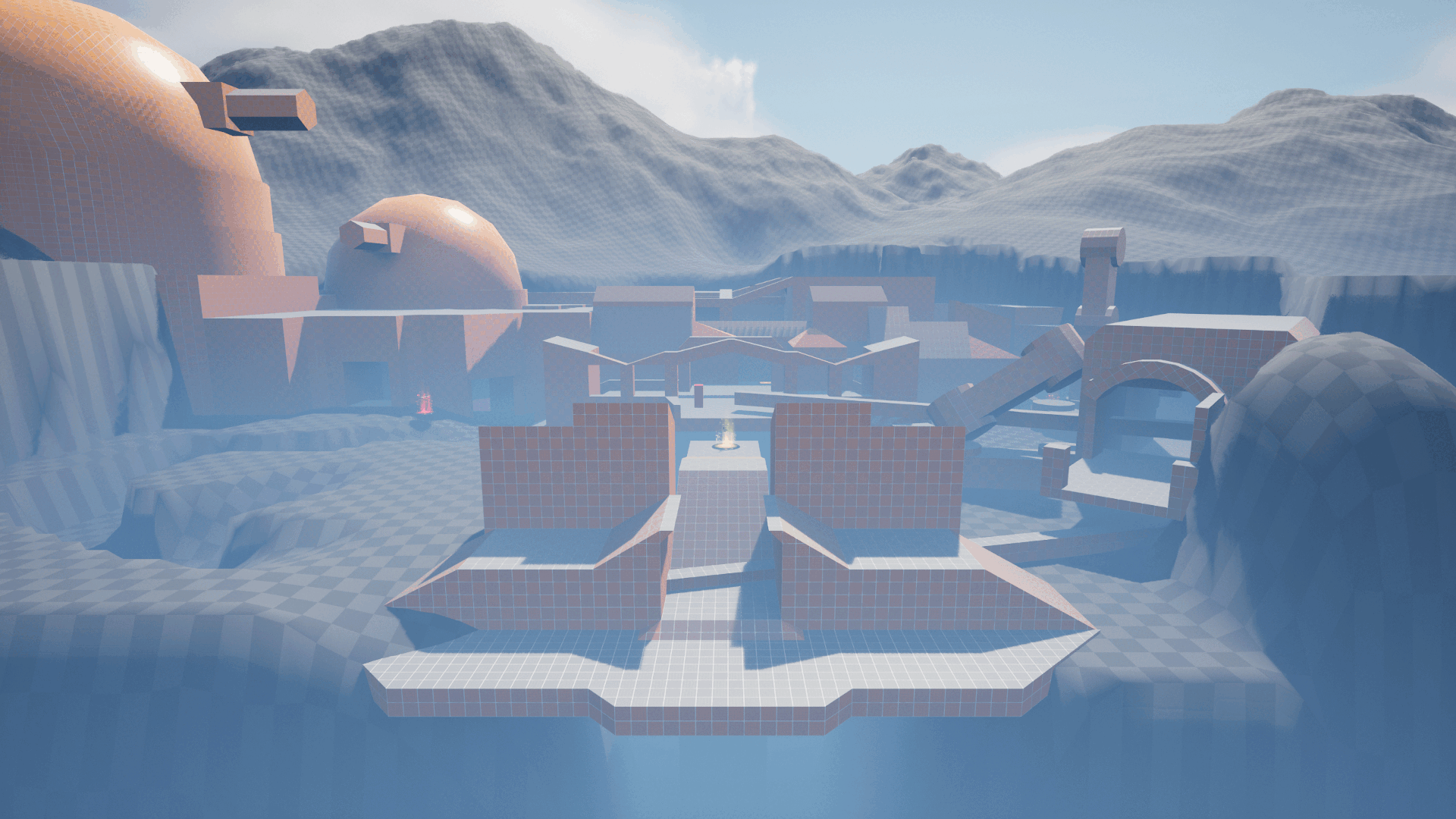
Workflow

Pre-Production
Before starting pre-production I knew that I wanted to make a third person multiplayer shooter set in Star Wars, but I wasn't sure if I would do the scripts for the AI and gameplay myself or use an asset pack. I discovered Epic's own Lyra, which contained all the features that I needed.
After that I started paper designing the level on Miro and looking at images of the Star Wars snow planet Hoth and from DICE's Battlefront 2 for inspiration.
Paper Design
Originally, I wanted to make a map similar to DICE's Battlefront 2 levels in scale, but it became clear that this scope was too big. To address this, I pivoted to make a Halo style map instead.
At first the destroyed walker served as the focal point in the center, featuring a control point within its structure.
The mountains and ice cave remained on one side of the map, though with a different layout that still led into the Rebel bunker. Instead of the clouds and mountains on the opposite side, a vast ocean stretched out with frozen ice spikes sticking from it.

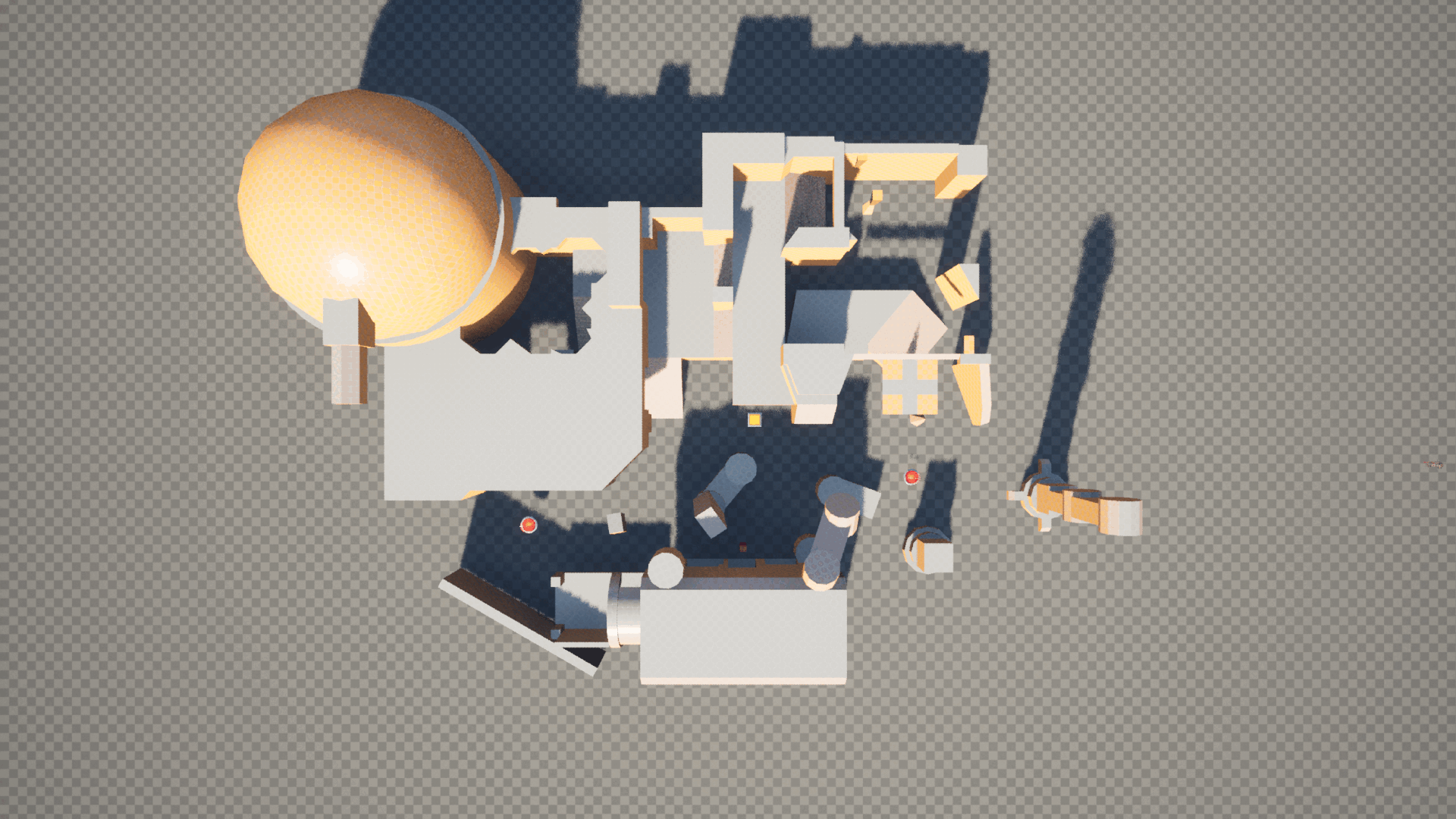
Blockout Phase
When I began blocking out the level, I realized that the map was too small and lacked engaging flow, landmarks and environments. The original map size was based on Lyra's own maps, I was initially concerned that a larger map size might cause issues with the AI, but I discovered this wasn't a problem.
I doubled the map size, allowing for better flow and more space to create interesting landmarks and combat arenas. I moved the walker to the side as the Empire's new spawn point and also expanded the ice cave to better suit the third-person camera. Finally, I replaced the large ocean with a thick cloud layer and mountaintops.
Reflections
From start to finish, this project taught me a lot about the many aspects of multiplayer level design and adapting my level to a set theme, game design, mechanics and metrics. Overall I am happy with the end result, but there are aspects of the level I would have improved on if given more time.
Rebel Spawn
First, I would expand the bunker to include a new room for the Rebel spawn, as indicated by the white circle on the image. Currently the bunker acts as both a rotation path and a spawn point, but by making this change, I aim to further prevent spawn camping and provide players with a more comfortable starting point.


Radar Changes
I would also expand the radar building, as it feels cramped for the third-person camera. Although I did increase the space size, but further expansion could enhance gameplay more.
As indicated by the white lines on the image, I would add a corridor that wraps around the building on its left, providing attackers with more flanking opportunities. Additionally, I would extend the building to the south and east.
Final Thoughts
Overall, I am satisfied with the results and the significant early changes made, which greatly improved the whole project. However, I would also like to introduce more elevation changes between different areas of the map to make combat more dynamic and unpredictable. Additional superficial changes such as updating character models, sounds and music to better align with the Star Wars theme, could also be needed.
Also adding real online multiplayer functionality, as it is currently only playable against AI. Transitioning the level from a blockout to a refined blockout would also enhance player readability and be the final step before set dressing it.
Thank you for taking the time to read about my level!
